Dog repellent comes in many forms, but they are all physical methods of discouraging your dog to go near a particular thing or into an unwanted area. A dog repellent can be sound, odor, water or even chemical based.
All these methods can work on some dogs, but they are not universally effective. They are also aversive, punishing and upsetting to your dog. That’s why they won’t go near it! Most modern trainers believe that using deterrents in animal management should always be a last resort as side effects can be unwanted and unpredictable.
- Do you want to redesign your garden?
- Training your dog to stay away from an area.
- Dog proof barriers and dog repellent.
- Do dogs stop digging up the garden when they grow up?
An alternative to the dog repellent is to train your dog to stay in a part of your yard, or away from another. While training is generally a good idea, when it comes to relaxing and enjoying your garden, it is often better to avoid trouble than to treat it as a training issue. Dog barriers are often seen as the most effective and ethical solution, but they aren’t always practical.
Why Keep Dogs out of Garden?
There is nothing puppies enjoy more than a bit of ‘freestyle’ gardening. Most young Labradors think that a rose bush looks a lot better when it has been uprooted and dragged around the garden a few times. And of course, digging up your prize carrots is always a good way for any Labrador puppy to start the day. In fact, digging of any kind is a source of joy to many dogs, not just puppies. This can come as quite a shock to a first-time Labrador owner.
Are All Dogs Destructive in Gardens?
Some puppies are positively angelic outdoors. Which makes the owners of the naughty ones feel as though they are doing something wrong. I can reassure you that for the most part they are not doing anything wrong at all. Destructive behavior in puppies left unsupervised outdoors is so common as to be considered normal.
In the photo above, you will find my own puppy, Rachael, relaxing in the mess she has made on our patio, after being left to her own devices for rather too long. Your dog’s excavating abilities may rival those of a backhoe, but they don’t indicate an unstable temperament or some kind of mental disability. You simply have a normal Labrador puppy.
How to Keep Dogs out of the Garden
So, your dog is normal. That’s the good news. But it doesn’t change the fact that you don’t want a dog, any dog, digging in your flower beds or rooting around in your vegetable patch. Naturally, as the owner of a young tearaway, you are looking for a quick and effective dog deterrent solution. A command or training method that will keep dogs out of garden areas, off flowerbeds and put a stop to the destruction and naughtiness.
Most importantly, you want to be able to let the dog into the yard without watching him like a hawk every second he is out there. We’ll examine the main ways to keep dogs out of gardens and prevent your little piece of paradise turning into a moonscape.
Methods
Here are some of the options we are going to consider:
- Altering your garden design
- Training your dog
- Dog proof barriers
- Dog repellent and deterrent methods
- Wait it out.
Let’s start with a look at changes you can make to your yard/garden to make it more compatible for life with a dog.
Altering Garden Design
The first option we’ll consider is making changes to the design and style of your yard to keep dogs out of garden.
One of the problems with dogs is knowing which areas are off-limits to them. This is much more difficult if the boundaries are blurred or not physically obvious. The point where grass ends and flowers begin might be clear to you, but it isn’t clear to a puppy. Raised flower beds with a solid boundary help dogs make these distinctions. Putting plants in heavy raised tubs can reduce digging, so can replacing grass with paving or pebbles. You can get great ideas for designing gardens that are home to dogs on Pinterest.
Redesigning your garden can be a great solution if you can’t keep dogs out of garden areas you own, or you don’t want to.
Training Your Dog
Training is certainly an option. Dogs can be trained to remain in one particular part of a garden while avoiding others. But it isn’t as simple as teaching a dog to sit, and it requires your active participation until they are fully trained. If you plan to undertake this kind of training, you will need to monitor your dog continuously while he is outdoors for some time to come, and to spend several minutes a day, two or three times a day, on training sessions.
Here’s a Kikopup video that will give you an idea of what’s involved.
This is useful training. But it’s also training that is best suited to those who are normally out with their dog in the yard or garden. If you ultimately wish to leave your dog outdoors completely unsupervised, relying on a trained behavior is not something that even I, as a relatively experienced trainer, would consider doing. For the unsupervised dog, the best remaining option to keep dogs out of garden areas is likely to be dog proof barriers and/or a dog repellent.
Dog Repellents vs Barriers
We mentioned raised flower beds earlier to keep dogs out of garden areas. These may deter dogs from straying onto your plants, and they can help you train your young dog to respect the flowers when you are in the garden together, but they are not dog proof. Raised beds are not going to stop a determined digger from mounting an attack on your roses. So, how do you keep dogs out of garden areas?
I’ve seen mulching with rose pruning suggested, but I would worry about dogs getting thorns in their pads. A better alternative is pinecones, especially if those are abundant in your area. Protecting your plants with permanent barriers is likely to be an unappealing option to keep dogs out of garden areas. Both because it is hard to build attractive barriers around flower beds that are actually dog proof and because it is a lot of work.
Think of Your Dog’s Age
With a puppy, you may decide a better option is to compromise with temporary fencing – wire netting for example – around your flowers and accept that your yard isn’t going to win any competitions this year.
If it’s an older dog causing problems, a simpler option might be to fence off part of your yard specifically for the dog to play in. Create an exercise yard or dog playground of some kind. These can be quite attractive and again, Pinterest is a good place for inspiration.
If none of those appeals to you, that leaves us with dog repellents. Let’s find out what a dog repellent is, whether dog repellents or dog deterrents work, how safe they are, and where you can find them.
Dog Repellents
A dog repellent is something that a dog finds unpleasant and will choose to avoid. We are not looking at hand-operated training devices here, but rather at repellents that you can set up and leave. The idea is that the repeller sits in the area that you wish your dog to steer clear of and it works in your absence.
To act as a deterrent, the device must create an environmental trigger that a dog dislikes and may find upsetting. This is not something to undertake lightly or with a nervous dog or one that lacks confidence outdoors. Dog repellents for gardens fall into three categories:
- Ultrasonic – dog repellents that use sound
- Dog repellents that use water
- Chemical or odor dog repellents.
Dog Repellent Sounds – Ultrasonic Dog Repellers
A number of US patents have been filed for animal repellers that work by emitting a shortwave high-frequency sound. The idea being that humans cannot hear sounds over 20,000 Hz (known as ultrasounds), but animals can and will try to avoid them because they find the sound unpleasant. That’s the theory.
Devices aimed at the homeowner for use in the yard or garden generally consist of a small square or rectangular box. They are mounted on a spike which can be pushed into the soil of your flowerbed or lawn. The question is, do these devices actually work? And the answer is unclear. A number of studies have been carried out using these devices on mammals over the past several decades.
Efficacy of Ultrasonic Dog Repellers
In 1990, two experiments were carried out on a group of dogs using three different electronic units. In the first experiment, no device repelled all dogs but some dogs exhibited aversive behavior to two units. With the second experiment (with modified equipment) one unit had an immediate effect on nearly all dogs, with half reacting aversively.
Ultrasonic repellers were also tested on White-Tailed Deer in 1998. Some were fitted with strobes and some were not. Only the repellers fitted with strobes were successful at repelling deer from feeding stations.
A study carried out on cats using an ultrasonic device showed a modest deterrent effect. The authors of the study noted that the effectiveness of the device increased over time and concluded that it could be further improved by more careful positioning of devices. A study published in 2007 tested on dingoes concluded that the ultrasonic device studied had no measurable deterrent effect. A more recent study, carried out on badgers at feeding stations in the UK concluded that ultrasonic devices may even have attracted badgers to the baiting stations!
What Do The Results Mean?
It appears the results are very mixed as to whether these ultrasonic repellent products work to keep dogs out of garden areas. It’s worth remembering that most of the studies carried out on these devices use feeding stations to attract the animals to the device in the first place. At a feeding station, there is strong motivation for the animal to put up with the aversive effect.
Digging up flowers is not usually as motivating to a dog as food, and it is possible that the device will fare better in this situation than it would in a trial. Despite that, we feel that the alternatives are more desirable.
Choosing an Ultrasonic Repeller
What do the manufacturers of these ultrasonic animal repellers, and their customers, have to say about the success of their products? Most of these products seem to be manufactured in China or Taiwan, and unfortunately, the manufacturers’ websites lack information or links to sources that back up their claims.
We can, however, read the customer reviews on these products. Here are some of the products available today and what reviewers seem to think of them. The ones with the best reviews all seem to incorporate some kind of flashing light in addition to the high-pitched sound they emit to keep dogs out of gardens.
Best Ultrasonic Dog Repellers
The Hettak Animal Repeller is a green box that you locate in your yard and claims to repel all manner of animals from your garden.
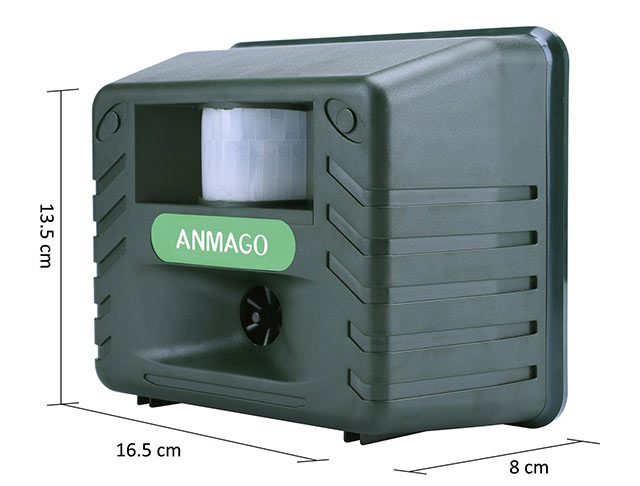
It’s waterproof and solar-powered, can be plugged in or run from a battery (not included). It can be attached to a fence or wall and has a good proportion of positive reviews. You can read those reviews here(paid link)
Pestzilla Outdoor Animal Repeller
The Pestzilla outdoor animal repeller is a ‘box on a spike’ type of repeller and claims to be particularly powerful. It incorporates flashing LED lights –
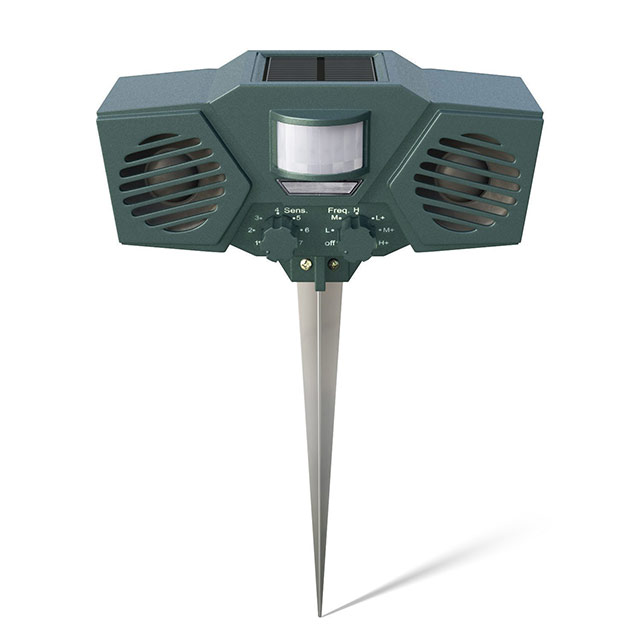
From the White Tail Deer study, we can see that strobe lights did have an effect on deer. Whether they would bother dogs, is a question that remains unanswered, but the majority of Pestzilla’s customers seem happy. Check out the reviews here(paid link)
BestGreen Animal Repeller
Another repeller that received a high proportion of good reviews was the BestGreen.
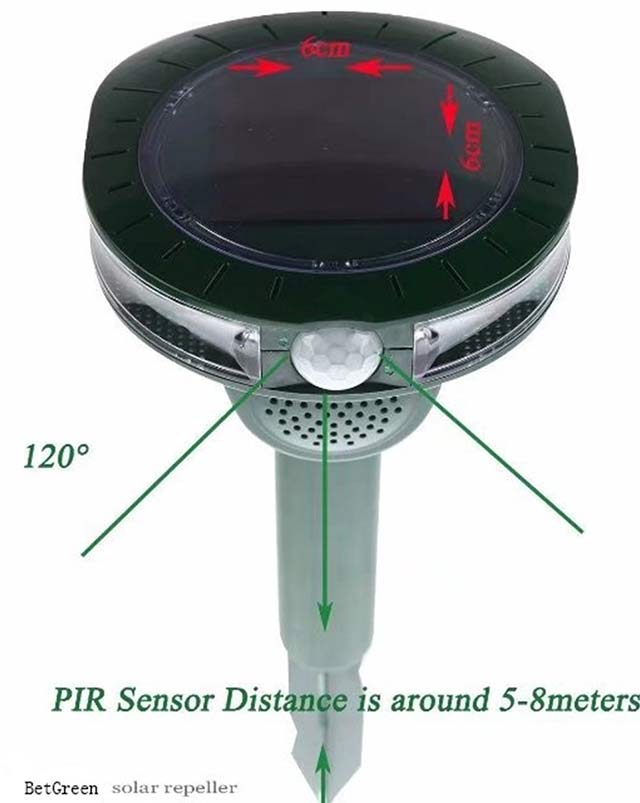
This model also combined LED lights with the ultrasonic noise. Here are the reviews(paid link)
Don’t scare your dog!
Okay, those are some examples of ultrasonic animal repellers that are claimed by the suppliers to be effective on cats and dogs. But here’s the thing to remember. If devices like this work, they probably work by frightening the animal away from the device to keep dogs out of gardens. If you use a device like this in a small area – where your dog cannot easily move away, you are going to have a scared dog on your hands. Possibly a dog that won’t go outside at all.
Dog Repellent Sprays – Water
Dog repellers that use water are similar in design to the ultrasonic deterrents in that they are attached to a spike that you push into the ground. They are also triggered by the motion sensors that detect an approaching animal. Instead of the device emitting a sound, it emits a stream of water to keep dogs out of gardens. This means that the device needs to be attached to a water supply. A garden hose is connected to the water inlet, and the trigger operates a valve that releases the stream.
Studies have shown that water jets can be effective at frightening some types of birds away – herons for example – which may appeal if you have a garden pond whose fish population you want to protect. And in the badger study we mentioned above, water jets were also tested and found to have some effect. Though not a very strong one. The devices did reduce food intake at the feeding station but not badger activity overall.
Bear in mind though, that there is less motivation for your dog to approach a flower bed than there is for a wild badger to tuck into a free dinner. So, in theory, it should take less to stop him.
 (paid link)
(paid link)
How Water Repellers Work
This is a fairly typical water spraying animal repeller. As you can see, the water repeller is rather more substantial than the ultrasonic repellers and needs a water supply. Many people are buying and using these for repelling wild animals such as deer or the neighbor’s cats. It is debatable how well they might work on water-loving dogs like Labradors. Though, of course, taking a dip in your favorite pond is not the same as being squirted in the face.
Again, the risk with using an aversive like this is unwanted effects. A dog that won’t swim on the beach because he has developed a fear of water spray for example. It could happen.
Dog Repellents that use Smell or Odor
There is evidence for the limited effectiveness of certain chemicals or odors as dog repellents to keep dogs out of gardens. But when using these solutions, there are factors to be aware of. Outdoors, any kind of chemical that you apply has the potential to both
- Have some effects on the surrounding area
- Break down and become ineffective soon after application.
Provided that you are aware of these two issues, dog repellent sprays that keep dogs of the flower beds using unpleasant odors may be something you’ll want to consider.
Examples of these Repellents
Two such repellents are methyl nonyl ketone and cinnamic aldehyde. In laboratory tests these chemicals reduced damage by dogs and cats to garbage bags by 70-80% and in the field by about half that amount. Most of the products available to the public, however, contain natural ingredients – substances that dogs don’t particularly like such as eucalyptus – but the reviews suggest that they are not particularly effective.
Repellent sprays with names like ‘liquid fence’ and ‘critter ridder’ sound appealing but may have limited effects to keep dogs out of gardens, partly due to the nature of being outdoors.
If you want to try something like this, you might be better off creating your own home-made concoction. A lot of dogs dislike citrus fruits like lemons. A few lemon slices or citrus peels around your roses might just do the trick. Or you could try placing cotton wool balls soaked in vinegar or ammonia around your precious plants. Mind your fingers and watch closely – some dogs will eat the weirdest things!
Should You Just Wait it Out?
Sometimes, the best option to keep dogs out of garden areas is to wait out this phase. The secret to nice flowerbeds and a fruitful vegetable plot in a yard shared with a Labrador puppy is usually more supervision and/or restriction. Just like we need to move trash bins out of the way (or use puppy proof lids) in the kitchen when leaving a dog alone there, so we also need to take steps to restrict a puppy’s opportunities for mischief outdoors. Put up a few barriers, or move things around a bit.
This may seem like a big deal now, but it really is worth it. By the time your dog has passed his second birthday, he will probably have lost much of his passion for landscape design. Hopefully, you will be able to relax and give him free run. Until then, you will find life a lot simpler if you put a temporary fence around your vegetables, move your tubs and planters where he cannot reach them, or fence off part of the yard for your puppy to play in.
When it comes to puppies, it is a good idea to pick your battles carefully. This is one that you may struggle to win.
The Labrador Site Founder
Pippa Mattinson is the best selling author of The Happy Puppy Handbook, the Labrador Handbook, Choosing The Perfect Puppy, and Total Recall.
She is also the founder of the Gundog Trust and the Dogsnet Online Training Program
Pippa's online training courses were launched in 2019 and you can find the latest course dates on the Dogsnet website

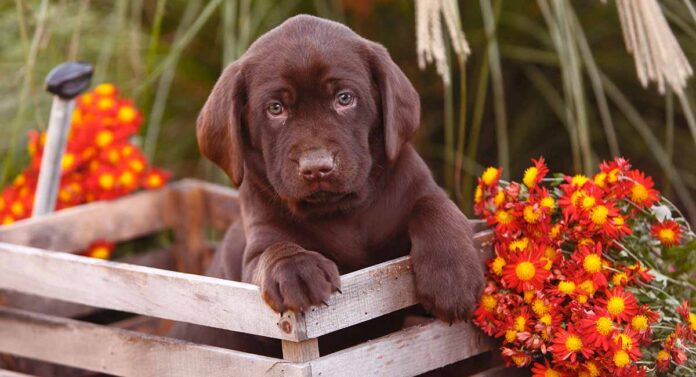
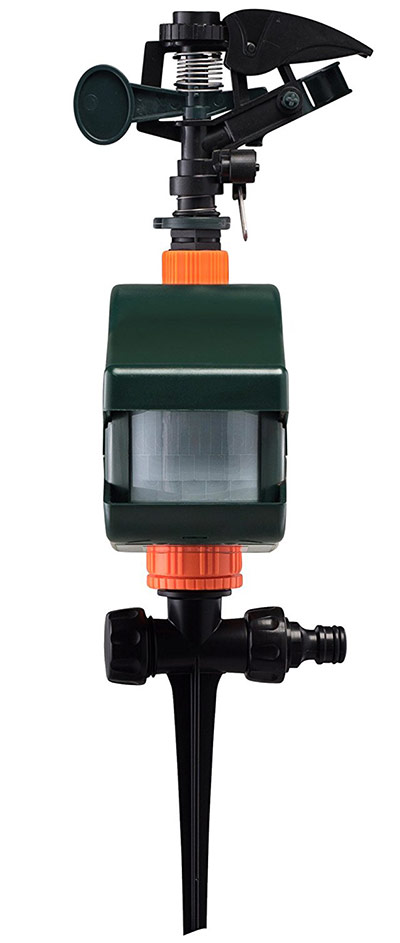
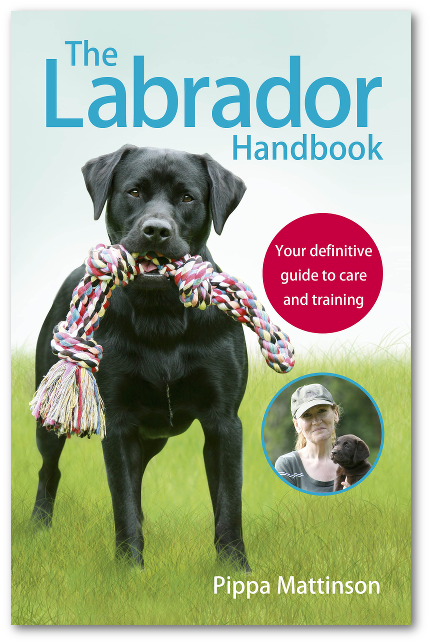
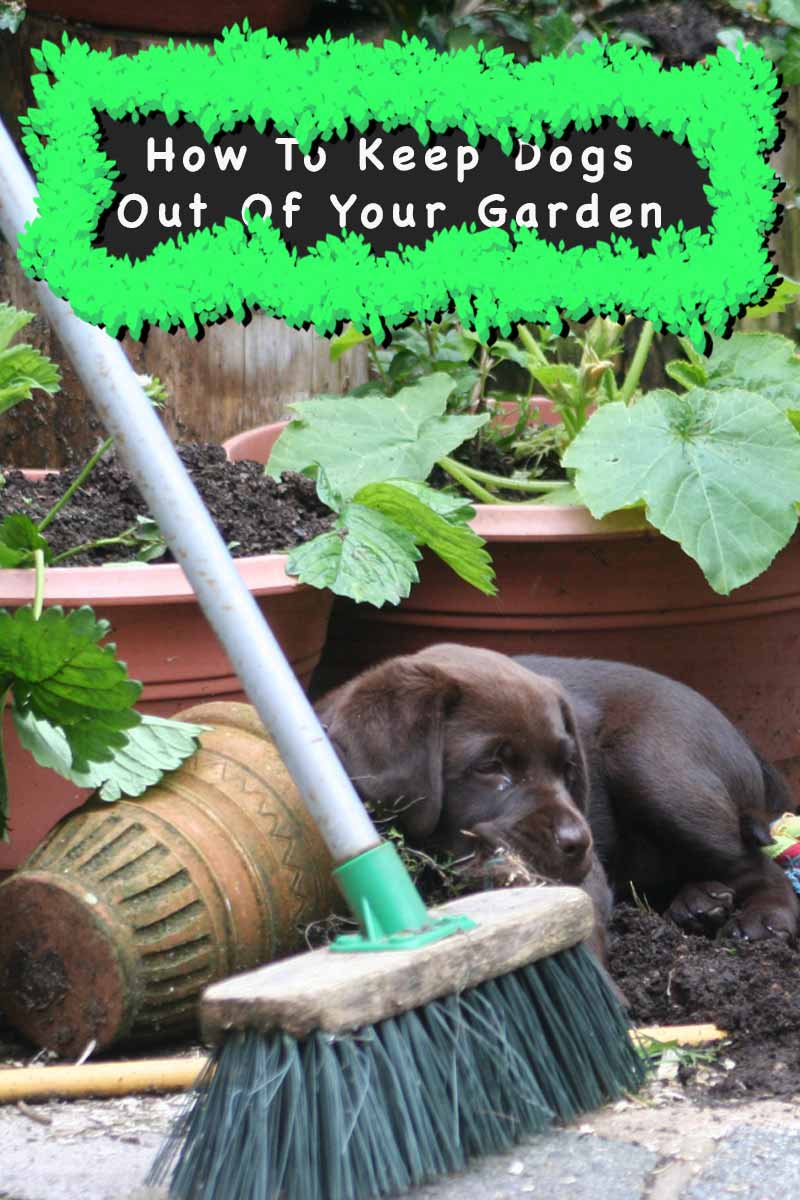


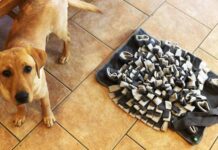

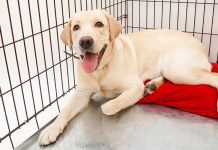

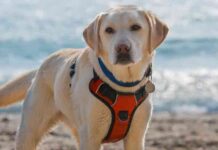









It tells the methods to keep dogs out of garden areas. Dogs can sometimes be disastrous for gardens, and some dog barriers might help.
I’d almost forgotten how destructive dogs are. Dogs are the only pet that requires extensive training just to make them tolerable. They have to have pretty much all their natural behaviors trained out of them.
I took my puppy from a dog foster home about a year ago. I love him to bits; he has a great personality, and I feel that he loves our family so much. BUT he digs holes A LOT… So, leaving home is always a challenge for us. My husband and I were thinking about taking him to ‘doggy school’, but then again, it’s extremely expensive, and the nearest ‘doggy school’ is far away from us. Maybe you have some advice? THANK YOU!!!!
Help! I live in Southampton, in the south of England, and I can’t get the Hettak animal repeller. I have a problem with a stray dog that keeps running around the shared communal area where I live, and have tried all sorts of repellents to keep it from peeing in my front door way. The only thing that works is a water cannon, but that has a limited range, is hard to get hold of and doesn’t stop the dog from coming into the communal area. Amazon UK and Ebay UK both don’t sell this device, and the US sites won’t ship to the UK. Can anyone advise me, please?
This was SUCH a pleasant read! I love your assurance of ‘normal’ puppy behavior as it relates to landscaping doggy-style.
I also appreciate your reference to the ‘neighbors’ dog- we too often do comparisons to others dogs or puppies & that can be so destructive to our personal story with our unique pup/ dog.
I had an amazing Labrador, (English)- he only wanted to please, was always mellow yet willing to go hike or walk- he was a great protecter & an absolute LOVE – he never ripped up a shrub or ate a single shoe, his favorite place to sleep, my closet, amongst my designer shoes/ boots. Two years after his passing, (an Angel who returned to heaven), I purchased my next Labrador – knowing there was no other like my Noah… yet, I didn’t expect the extreme opposite!! Keeping in mind that just like people all dogs are unique & special- I eagerly await a day that he will mellow, but I am slowly learning that getting angry & blowing it- only creates more stress & bad behavior, (for both of us). That doesn’t mean I don’t discipline with firm NO’s & trips to time out- for his sanity & mine! I have to tenderly remind myself that my life is not about my puppy & his lack of obedience but my life is about living & incorporating him in to my life, as I am his Leader. One day it won’t be watching over him every minute he is out of his crate.
Until he does mellow his time outs & nap times are my favored time of the day! He looks SO cute sleeping!- Ha! One day at a time & I am going to get your book after reading from this site.
Thank you to your readers & you for sharing your insight & humor in keeping it real. 🙂
Our labrador is almost two now. When he was a puppy, we didn’t bother with a vegetable garden. This year, we thought we’d be alright, and he hasn’t been too bad with digging or trampling. Recently, we got to harvest our first four strawberries for the season – all others, green or red, have “gone to the dog” who simply demolished the fabric tunnel to get to them. He will often go over straight after breakfast to check whether there are some new goodies on the plants. We’re not stoked about that, but not that surprised that strawberries are attactive to him. A few days ago, we started to harvest bok choy by cutting the plants off above the growth point, so it can regrow. The dog has since developed a liking for bok choy stalks, has trashed the insect mesh, and takes even the shortest of opportunities to dig up the plants and munch the stalky bit off the root system. Unless we can get a fence around our vegetable patch quite quickly, I don’t think we’ll enjoy much home-grown produce this season.
hello! I have a Rott puppy of 3 months (I had another one that was perfect before but died of illness) and this One spends all day destroying my yard, making holes and breaking grass from the roots. He lives outside, we play almost 1h each day, and then during the night is when he most makes a mess. He has 2 large pet bones to chew, his blanket and a small ball to chase when I´m not with him, but still he goes around running and playing with them, then a few minutes decides to dig and bark at it, then dig, and start eating grass. He also started to ¨play¨ and bark at my hose, he almost flooded my yard during the night because he broke it. I dont know what to do anymore, I´m very close to giving him away, I work all day and we play too but still not enough. I made all the warnings and options you pointed. My other rott never make things like this, One warning was enough. But this one does what he wants! help!
Owner of a 10 month old black male lab and identify with you all…with pot plants I found putting their own poop in there discourages them as well as any holes they start I drop his poop in there and he leaves it alone. The camelia bushes however are looking like going down unless I spend money and fence them…..considering what is cheaper, fencing them to keep them or replacing them when he has lost interest lolz grrrrr
Hi Lita, I am sorry to hear that you are struggling with your puppy’s behaviour.
It sounds as though there are a few seperate issues that need addressing. Here are links to relevant articles which will help you to work through them:
Potty training: https://www.thelabradorsite.com/15-puppy-potty-training-problems-solved/
Chewing: https://www.thelabradorsite.com/how-to-stop-your-labrador-chewing-things/
Digging: https://www.thelabradorsite.com/stop-my-dog-digging/
You might also find this article of interest regarding caring for her whilst you are at work: https://www.thelabradorsite.com/combining-a-labrador-puppy-with-full-time-work/
Best wishes,
Lucy
I feel like my life is turned upside down with this lab puppy. Elvis, is a year old. He comes in to sleep and on occasion when we can watch him. I also have a small Yorkie. My yorkie, Tinkerbell, is a senior, she comes and go through a doggie door. Since obtaining Elvis, she cannot get outside because Elvis keeps his head in the door. I try and try and try, to teach him that he cannot keep his head in her doggie door but he just doesn’t get it! Now I have my yorkie, unable to get outside to do her duty. Also, my lab, has chewed up my grapevines, digging holes, pulling branches off my orange tree, and I have banana plants that he is destroying. Elvis, goes for a walk once and sometimes twice a day. I’m ready to cry! I’m so depressed, it has taken me a long time to make my backyard look halfway presentable. I cannot invite anyone over because Elvis charges them, he wants to play but he’s large and scares many of my friends. He jumps on me, I have a couple scares on my arms from his toes nails. My boyfriend, is NO help! He really doesn’t care that the dog is destroying the house. I feel like running away! HELP!
Forget the garden, my dog is scratching my indoor carpet. This is not the “nesting” sort of scratching. I caught him once. He walked over to an area, scratched a few times and then walked off. Now, he only does it when I’m gone. Any ideas to stop him? I thought it may have something to do with his thyroid since he’s on meds for it, but his levels are normal now Thanks!
Hi Pippa! I have an 8 (almost 9) week old labrador puppy named Skylar. Every time we take her out for walks, she always beelining for a space between a hedge where there are plants that sort of stick out of the ground. She chews on them, and a few times has swallowed because we have not been able to get to her quickly enough. My family and I are extremely worried that she will get really sick! Any suggestions on how to eliminate the problem or how to teach her not to chew on plants, sticks, etc? Thanks!
My puppy is 8 weeks, we just brought her home and she loves digging. Not a keen gardener so I don’t mind so much but the mud covered paws are something else entirely! How can I clean them? And should I clean them? Any advice appreciated!!
We have three labs- black 6, yellow 2 & chocolate 10 months…I have a large yard and garden and with the three tearing around the yard, I’m just thankfull for the few areas that look like garden 🙂 The pup does like the pull the odd plant out and chew on my Rhodo as he goes past…I know he’ll outgrow it eventually…the yellow boy did and now could careless about the plants. They all like to lay or dig in freshly weeded areas when it happens 🙂
I have a 14 week old chocolate lab. I always thought we just got the lunatic as i had a very calm pretty much human, king charles before hand, unfortunately i lost him to heart disease 2 years ago. I’m so glad that Tobi isn’t the lunatic i thought i’d ended up with and just a normal crazy lab! My poor garden and my daughters toys, are ruined cause hubby leaves back door open for free reign… I think both need training! ~How do i get him to stop eating my plasterboard though.. he only chews the same 2 parts in the kitchen??
Hi I was given a 7 year old labrador , 7 months ago he has lived in the garden all his life I got him and keep him indoors but he not happy chewing things up , going a toilet in doors and digging garden up he goes for walks 4 times a day , he has the run of my house and garden just don’t know what to do any more
Hi Emma, you need to restrict your dog to one small part of the house to begin with. Pippa
Hi, my Lab is 8 years old and in the last few months has started to dig under the fence. She has escaped twice while we are at home, and the third time while we were at work and ended up being taken in by our neighbours until we got home. She has never been interested in digging, and always a good dog but suddenly she seems desperate to get out. We have filled gaps under the fence with pine sleepers, but now she has started to dig under the gate also. Most times she has tried it is rainy and can hear thunder. How can I settle her? We also have a cat who is fine in the weather, and they keep each other company, even sleep in the kennel together. Thank you.
Hi Erin, Some dogs will dig if they are frightened. Fireworks and gunfire can trigger this behaviour. I suggest you keep your dog indoors when it is thundery or when you have to be away from home for any length of time. The alternative is a dog proof kennel and run with properly ‘dug in’ fencing. But that won’t address the ‘fear’ issue. Best wishes, Pippa
Hi Tina,
Some dogs need very secure fencing to keep them in. Wooden fencing suffices for some dogs but is not really ‘dog proof’ and cannot be relied on to contain an unsupervised dog. Obedience training only works if properly proofed.
Pippa
Hi, this is so funny. My beloved black lab passed away last July after 13 wonderful years, so I still miss her terribly. However, I clearly remember the first day she came into our lives, she went out into my beautiful garden and completely destroyed my prize begonia. But, it is pointless being mad, because she just so loved doing it. She did settle down, so that the following summer I was able to reclaim my precious flower beds. I now have a golden retriever puppy ( 10 months old) Who is also systematically destroying my garden; she can have it this year, but I expect to reclaim it next year. I think if you go into it with the attitude that you have lost your garden for the first year, you will come out of it just fine!!! I wouldn’t have it any other way…..